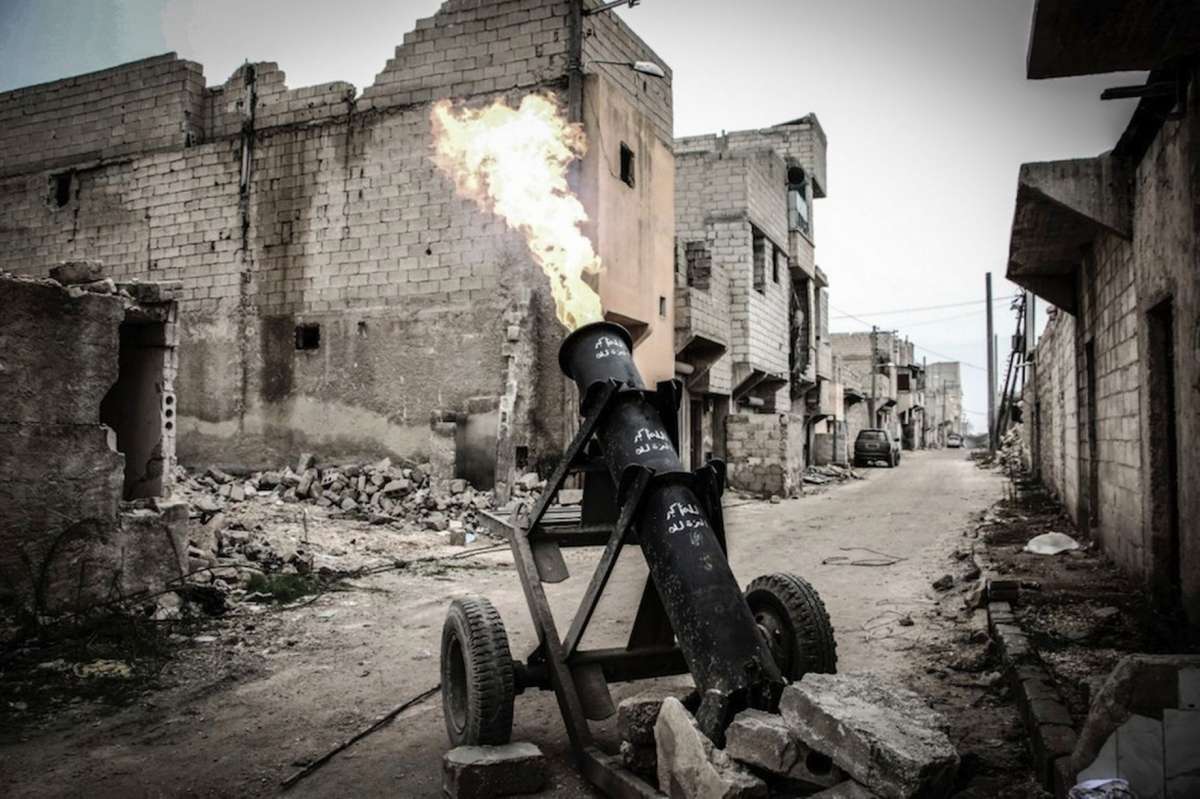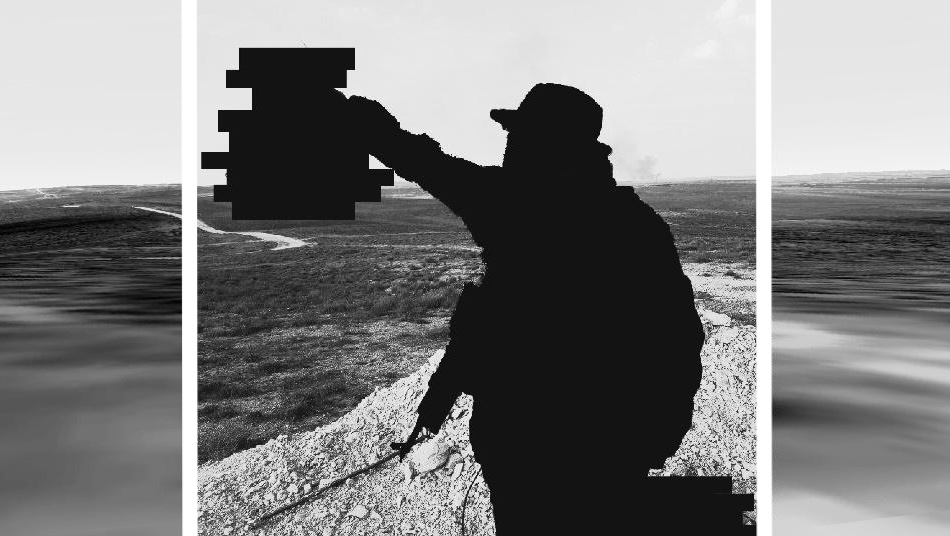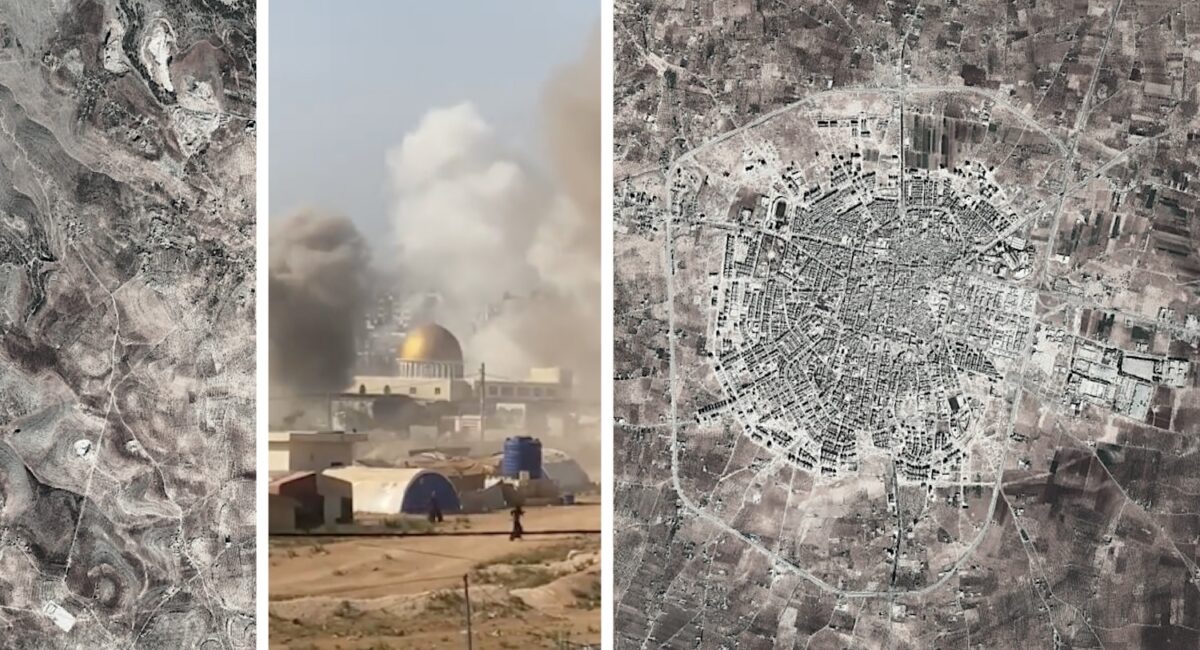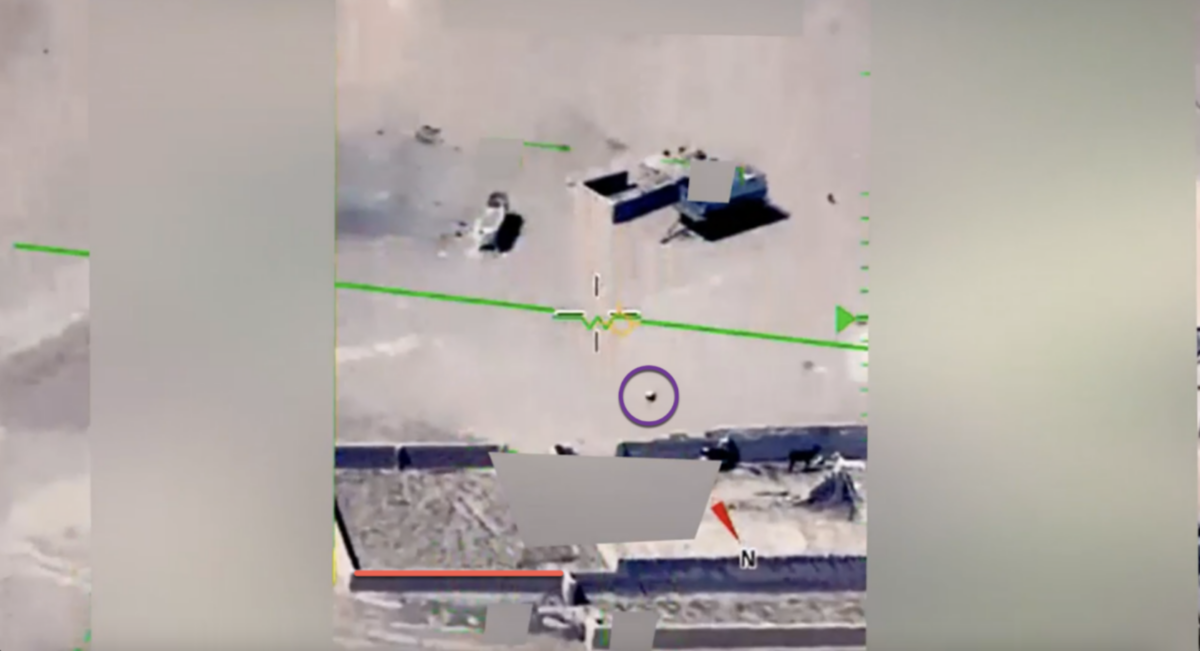Hell Cannons: From Minor Nuisance to Major Threat - The Evolution of Syrian Opposition Siege Artillery
Translations:
When historians discuss defensive capabilities in conventional wars between two major powers, traditionally each power tends to have either domestic arms manufacturing or has secured the services of another nation (or nations) to do most of the heavy lifting for their defense needs. For the Syrian regime, it is a mix of the two, with most ammunition being domestically produced by EID (Etablissement Industrial de la Defence) in Damascus, and nearly everything else is typically supplied by Russia or former Soviet bloc countries, though there is an increasing reliance on Iran as an arms supplier. In contrast, the opposition lacks both domestic conventional arms manufacturing capabilities and a formal arms supplier, making them reliant on other sources, including what benefactors deliver to them, what they can purchase on black market, and what they can manufacture themselves. In past civil wars, this has led to all sorts of domestic cottage industries (such as steel mills making cannon balls, foundries turned into cannon producing plants, chemical industries repurposed to make gun powder, etc.). However, in the 21st century the overwhelming use of modern weaponry and methods of warfare has meant that an opposition force without a major sponsor is at a decided disadvantage. As a result, the Syrian opposition has turned towards home brewed weapons that are not as effective as factory produced ones but that can still pack a punch.
When discussing historic homemade weapons, many of them have typically fallen short of the capabilities granted by mass produced weaponry. The molotov cocktail is capable of causing serious damage to armored vehicles but requires the user be incredibly close to the vehicle, all while risking life and limb to get a lucky bottle or two onto the vehicle. IEDs and double stacked mines provide a powerful anti-vehicle and anti-personnel weapons, but they are only as useful as the opposition’s ability to emplace them near routes of transport for the enemy force. With combat lines of Syrian cities often being fairly static, the opportunities for emplacing such weapons are increasingly less practical, particularly when the opposition is concerned about the two-way threat posed by victim operated IEDs (those triggered by the intended victims) and the potential for collateral damages. Syria’s siege oriented style of warfare, punctuated with brief surges of intense violence, has led to the reemergence of static warfare methods that are often absent from modern combat. Syria has seen not only the widespread use of bulldozers and earth moving equipment to establish redundant berms and trenches around hundreds, if not thousands, of defensive positions around the country, and tunnels both for resupply and transport of troops as well as for sappers to emplace explosives,but also the serious fortification of apartment blocks into veritable concrete and sandbag fortresses. But perhaps nothing embodies this siege environment better than the advent of homebrewed shock artillery almost mass produced by the opposition groups in Syria. The Hell Cannon of 2012/2013, initially a weapon of desperation, has both become and remains a mainstay of the opposition’s arsenal and an increasingly lethal threat in Syrian opposition military offensives. In the next few hundred words we will cover down on what exactly the Hell Cannons are, how they are produced, and what they are capable of.
Infographic from Ahrar al-Shamal on their first Hell Cannon
Appearing initially in Idlib province, as early as 2012 (disputable- the first reports don’t appear about it until 2013) with the group Liwa Ahrar al-Shamal part of Liwa al-Tawhid (itself a part of the FSA and the SRCC). The group released a basic infographic on the design of the initial weapon (translation available here ). The basic design involves heavy vehicle tires for transport/shock absorption, “feet” to plant the weapon in place and prevent it from recoiling backwards violently when firing, a pipe/barrel upon which the projectile is placed with the rod through which the propellant is expelled being inserted directly into the barrel to propel the round forward. This differentiates it from the more common Hell Cannons seen today where the entire projectile is inserted into the barrel. After ignition the round is propelled forward with distance being determined by how much propellant (and what kind of propellant) is supplied. Range correction is made by altering the angle of the cannon and changing the amount of propellant. Ignition can be either manually by lighting a fuse or from a standoff distance with electronic ignition by way of car battery and wires.

Multi-barreled Hell Cannon mounted on an earth-mover/front end loader
After catching on in Idlib, Hell Cannon design spread to Aleppo when (the now defunct) Katai’b Shuhada Badr (Martyrs of Badr Brigades – no relation to Iraqi Shi’a militia the Badr Brigades) picked up the design and began to produce it locally. Gradually the initial design spread and regional restraints or improvisation led to significant variety of Hell Cannons, some very complex with complicated aiming and firing mechanisms, others literally just tubes think enough to absorb the recoil of the firing aimed crudely in the direction of the area intended for bombardment, like this quad-barreled hell cannon mounted on a bulldozer by al-Jabhat al-Shamiyah (adopted elsewhere in a slightly more refined bulldozer design ).

A Hell Cannon under construction by Ahrar al-Shamal
Footage of the manufacture of either the cannons or the projectiles is fairly limited but at least a few videos and still photos have come out. The best example comes from the inventors of the Hell Cannon, detailing most steps of the process to build theirs in a seven minute promotional video . Produced in several shops with a plethora of machine tools and pre-existing parts, this is one of the best examples of non-conventional weapons being produced by non-state actors in Syria. In areas where less expertise or less equipment is available cruder examples tend to emerge and conversely more complex models have shown up elsewhere in Syria (additional construction photo here ). All a basic hell cannon needs is a tube larger than the munition and some means of angling towards its target. More complex models have legs to stabilize the cannon for greater accuracy (and prevent it from jumping out of place , recoil springs for the same purpose, traverse and elevation mechanisms for aiming, a platform for the gunner to stand on to load larger cannons, and a variety of other improvements. Projectiles themselves are produced, usually, by taking an empty metal canister (most commonly a propane canister), welding together the canister and the guidance assembly, filling the canister with explosives, and attaching a fuse (detailed more below). Explosives can be homemade by way of common chemicals used to build explosive material, harvested from unexploded barrel bombs, land mines, or other unfired explosives, or even be repurposed intact explosives themselves (also detailed more below).

After being filled with explosives, rudimentary fuses are installed in Hell Cannon projectiles

The variety in launcher design is matched equally by the variety in munitions themselves, but the vast majority of munitions appear to be built using the very common propane cylinders used for heating and cooking, with propulsion, detonation, and guidance varying from round to round. Among the most common are those placed atop the barrel like the initial design with stabilizing fins on the warhead itself, more modern variants of the same design with stabilizing fins placed closer to the base of the weapon along narrow vanes , and perhaps most common today is the kind inserted completely inside the Hell Cannon with a single rod centered on the bottom of the canister and stabilizing fins located at the bottom , helping keep the round oriented in the same direction upon firing and preventing tumbling. Other varieties include larger oxygen cylinders with fins welded to them and “Thunder Cannon” shells which are once-fired tank shells with the mouth of the casings welded shut/ filled with explosives and a rocket motor placed on the base of the shell (video available here ). Sometimes existing explosive munitions such two stage artillery rounds (those lacking their own propellant) are repurposed to become projectiles again as hell cannon rounds. Undoubtedly as the war continues on and new ideas are thought up there will be even more varieties of Hell Cannons and their munitions.

Jabhat al-Nusra displays double impact fused hell cannon projectiles used in the shelling of Fu’ah in Idlib governorate
Having covered a number of different cannons and their projectiles, it’s perhaps important to discuss how these munitions are detonated. One of the first things one notices when watching Hell Cannon strikes is that quite a few of them do not explode immediately after landing taking as long as 15-20 seconds after landing before exploding. Initial confusion about what was causing this led to competing theories of what led to the delay before explosion. Further video and pictorial evidence (follow on image here) indicates these homemade delayed action fuses are really just a timed fuse, that is lit prior to launch, burning down. Depending on the length of the fuse and the time of flight the fuse will have so many seconds left before exploding. In a 200 Hell Cannon strike compilation provided by reddit user /u/purpleolive, dozens of examples of these delayed action fuses can be observed as Hell Cannon rounds slam into building walls and rooftops, penetrating and exploding inside to much greater effect. The delayed impact fuses are desirable for static targets where the aim is to destroy a structure, but when immediate detonation is required impact fuses are required. To this end a variety of innovative means have been employed in Syria from repurposing conventional mortar or rocket impact fuses and attaching them to Hell Cannon projectiles. Initial rounds used a single impact fuse but gradually began switching to two fuse like these from Jabhat al-Nusra and (video of them being installed here ) and occasionally three fused variants appear. While not certain, it is likely that the shift to multiple impact fuses is to ensure that the round does not strike at an angle (either because of tumbling or simple a bad strike trajectory) and fail to detonate. Each style of fuse serves a function though it is likely that the availability of material to produce one fuse or another is the driving factor behind the selection for each rounds.

An FSA unit’s Hell Cannon demonstrating an electronically ignited variant. Not the retractable wheels that allow for the entire weigh of the system to rest on the ground reducing rearward recoil and adding to potential accuracy.
The munition is ignited by three different methods known thusfar: 1) ignition at the base or “breach” of the barrel, 2) prior to insertion into the barrel, 3) or most rarely by electronic ignition. A Southern Storm unit in Daraa, Katai’b al-Handasiyah wa al-Sawareekh demonstrates an oversized Hell Cannon that is ignited from the breach while an unknown FSA group displays their Hell Cannon variant utilizing electronic ignition. The volatile nature of handling explosives leaves little margin for error with the manually ignited methods means that accidents occur when the munition doesn’t go off when expected.

Fateh Haleb coalition member launch a simultaneous lateral barrage of Hell Cannon projectiles on ISIL positions in northern Aleppo
Accuracy and range will be different for cannon, munition type, consistency of propellant type, and the crew gunning it. Numbers as high as 1500 meters have been quoted and rough distance estimation from videos confirms this as feasible. When low charges are provided hell cannons can hit targets only a few hundred meters away with significant accuracy, like this shot of a Hell Cannon round being fired through a window in close proximity to the gunners (also a good example of delayed fuse). Like the game Pocket Tanks accuracy and range with Hell Cannons comes down to two major considerations: the angle of fire and the amount of propellant provided. An experienced gunner will have a rough idea what angle and how much propellant to use to get it to a general area, modifying those variables after observing the impact to make follow on shots more accurate. Use of levels, topographic/satellite maps, calculators and computer mathematical programs significantly improves this accuracy if precision fire is desired. A common critique of Hell Cannons is their use in indiscriminate shelling of a given area and the civilian casualties that occur. This is largely dependent on the end user and their purpose in shelling as it has been repeatedly demonstrated that rough estimates of trajectory and range can be calculated, so repeated shelling of civilian areas is largely the choice of the operator, particularly when the impacts can be observed. At closer range accuracy is often quite achievable with repeatable only meters apart from each other, giving some Hell Cannons similar accuracy to infantry mortars and allowing for the suppression of very close range targets. Volley fired batteries of Hell Cannons recently achieved a 100-150m lateral suppression with impacts only meters apart with near simultaneous firing of Hell Cannons on ISIL positions in Aleppo demonstrating the relative accuracy at close range even when fired in groups.
Very basic model Hell Cannon fires a projectile. Note the platform for loading, weight placed to keep the cannon steady and rocks placed behind the wheel to keep it from moving
In conclusion, Hell Cannons are not the first nor the last variant jury-rigged or non-conventional weapons of war, but in a conflict where progress is often measured in meters not miles, the proliferation of homemade siege artillery by non-state actors has grown from laughably crude and ineffective to massively widespread and capable of massive destruction. Lacking an air force to deliver the raw destructive power of the government’s barrel bombs, the opposition has reacted by inventing it’s own weapons of terror, albeit smaller and far more controllable, spreading quickly throughout opposition arsenals. Hell Cannons emerged initially as a small project of a single group, used to shell a hostile area and have grown to become as versatile and widely used as any other piece of artillery or indirect fire weapon used in the Syrian conflict, presenting a serious threat for Syrian military forces to confront and defeat.





